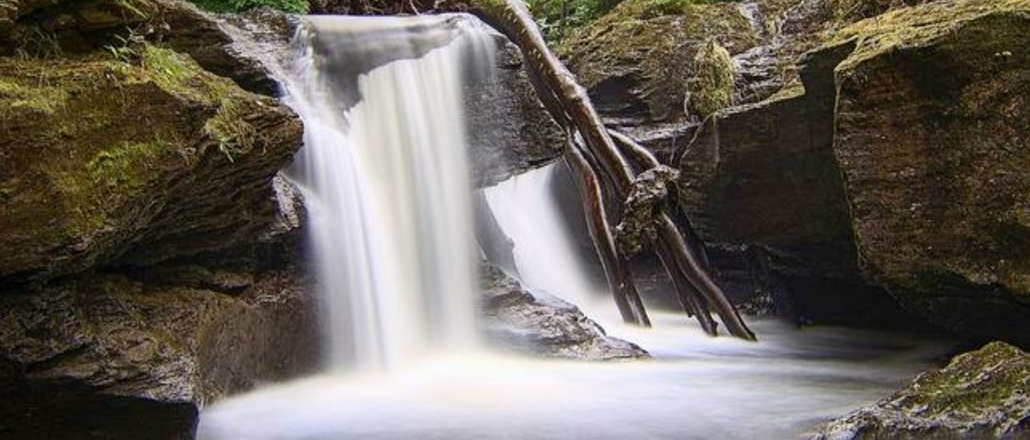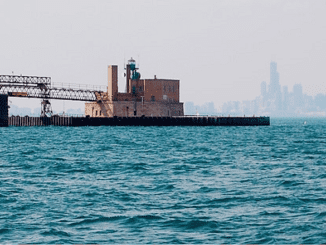
NEW YORK, New York, March 22, 2021 (ENS) – Clean drinkable water is rare and precious. Of the waters that cover 70 percent of the Earth’s surface, roughly 97 percent is the salt water of the oceans; just three percent is freshwater. Of that, only 1.2 percent can be used as drinking water; the rest is locked up in glaciers, ice caps, and permafrost, or stored too far beneath the surface to be retrieved. Much of the accessible freshwater has become polluted.

All this means that 2.2 billion of the planet’s 7.9 billion people live without access to clean water, close to 30 percent of the world’s population.
Today, on World Water Day, clean water will be celebrated in an online event intended to raise awareness of the global water crisis and support the achievement of Sustainable Development Goal 6: Water and Sanitation for All by 2030.
The theme of World Water Day 2021 is valuing water. The value of water is much more than its price – water has enormous and complex value for our households, food, culture, health, education, economics and the integrity of our natural environment. If we overlook any of these values, we risk mismanaging this finite, irreplaceable resource, say organizers of the Day.
Register for the World Water Day 2021 online event here.
Download the invitation here.
To make the most of the water we have, and to celebrate World Water Day 2021, March 22, people are sharing their best tips on water conservation.
The nonprofit organization American Rivers offers 10 water-saving tips to use at home:
* – Turn off the faucet while brushing your teeth, as you wash or rinse dishes, wash your hands or face or shave.
* – Only run the washing machine and dishwasher when you have a full load.
* – Use a low-flow showerhead and faucet aerators.
* – Fix leaks.
* – Install a dual flush or low-flow toilet or put a conversion kit on your existing toilet.
* – Don’t overwater your lawn or water during peak periods, and install rain sensors on irrigation systems.
* – Install a rain barrel for outdoor watering.
* – Plant a rain garden for catching stormwater runoff from your roof, driveway, and other hard surfaces.
* – Monitor your water usage on your water bill and ask your local government about a home water audit.
* – Share your knowledge about saving water through conservation and efficiency with your neighbors.
These water-saving measures can have a big impact on water demand in local communities. While saving money, you also have the opportunity to get involved in your local community, protect the water in your local waterways so you can continue to enjoy their recreational benefits, and get to know your home and family with a few do-it-yourself projects.
American Rivers points out that 30 to 60 percent of domestic drinking water is used to water yards and gardens, and often large portions are wasted by over-watering, evaporation, and misdirected sprinklers that water sidewalks and driveways.
The average U.S. per capita water use is 170 gallons per day. In Australia, it is 36 gpd. Water efficiency allows arid Australia to use far less water than the United States, but still enjoy a high quality of life.
Smart Management Saves Water at Schools, Universities
SSC Services for Education, a national facilities and grounds management provider for K-12 schools and universities across the United States, is sharing water conservation tips and strategies for communities, schools, management companies, and businesses to consider leading up to World Water Day on March 22.
“Sustainability is a core pillar of our work at SSC and is something we strongly encourage our team members to become well versed in,” said George Bernardon, SSC Services’ vice president Grounds Management. “Water management plays a key role in helping our partners on the path to becoming more sustainable and we’re proud to be doing our part to implement changes that can save energy and reduce costs for them over time.”

In the past decade alone, SSC points out, water utility costs have risen over 30 percent, with many cities facing aging infrastructure and fewer resources.
For schools and businesses looking to make an impact on their environmental footprint in view of World Water Day, here are five water conservation tips that can help improve operations and conserve water throughout facilities:
* – Conduct an irrigation audit: If you’re not sure where to start, consider conducting an audit to determine how much of your system is operational and to identify areas where water efficiencies can be implemented. Routine inspections help ensure systems are functioning properly and are not applying water to hard surfaces.
* – Upgrade to Smart Controllers and Flow Sensors: These systems use computerized water models that adjust daily to shift irrigation when there is rainfall or water runoff. Upgrading will provide users with alerts of leaks and malfunctions, allowing for timely fixes that can help cut down the amount of wasted water.
* – Add sustainable landscape elements: Consider creating a rain garden that can enhance curb appeal and is designed to catch rainwater and store it for later use when rainfall is not as frequent. In addition, designing landscapes with plants that don’t require as much upkeep can reduce water use and strengthen the surrounding terrain. Examples include adding native plants, making a wildflower grove, or creating a pollinator garden.
* – Collect sump wastewater: Many sites, buildings, and structures interact with the water tables and require pumping to remove water that would otherwise damage nearby buildings or cause instability. If the water is safe, it can instead be harvested and used to irrigate the surrounding area rather than being added into the storm or sewer systems.
* – Take inventory on indoor water usage: While outdoor facility activities largely contribute to water usage, it’s also important to be aware of indoor activities that do the same. Consider converting toilets to low-flow or dual-flush systems, install low-flow faucets where possible, regularly check for water leaks, and make sure to be mindful of running water when washing hands, showering, and even cooking.
Water conservation is a critical stepping stone to conserving a declining natural resource, protecting local ecosystems, saving energy, and lowering service costs. These innovations help locations reduce outdoor water consumption by up to 40 percent, with another 10-20 percent in water energy savings, according to SSC.
UN: Water for Sustainable Development
On Thursday, March 18, the UN General Assembly held a High-Level Meeting on the water-related goals and targets of the 2030 Agenda.
The meeting contributed to preparations for the first global conference on water since 1977 – a conference scheduled for March 2023 to review the progress of the current 2018 – 2028 Decade of Action – Water for Sustainable Development.

Volkan Bozkir of Turkey, President of the 75th session of the United Nations General Assembly, opened the High-Level meeting by warning that while “Water is integral to sustainable development,” but “we are well behind on the goals and targets that we have set ourselves.”
By current estimates, said Bozkir:
* – Some 2.2 billion people – almost a third of the global population – continue to lack access to safely managed drinking water;
* – 4.2 billion people – more than half of the planet’s population – live without safely managed sanitation;
* – 2 billion people don’t have a decent toilet of their own;
* – and 3 billion lack basic handwashing facilities – even in the midst of a global pandemic.
“If I may be candid: it is a moral failure that we live in a world with such high levels of technical innovation and success, but we continue to allow billions of people to exist without clean drinking water or the basic tools to wash their hands,” Bozkir said. “And make no mistake, this is a global failure that has far-reaching implications for all of us.”
Bozkir reminded the assembly how crucial clean water is to all life on Earth.
“Water is life,” he said. “We simply cannot live on this planet – and certainly not in any healthy capacity – if we are deprived of this most basic human need. Our entire agricultural system – all of the food we consume – is dependent upon water supplies. The same extends to all other life on this planet. Every ecosystem, every species, depends upon water.”
“Water is sustainability,” Bozkir said. “Safe drinking water systems and adequate sanitation are essential to ensure cities and towns grow sustainably. Without these core services and needs met, our ability to provide education, healthcare, and jobs and livelihoods will suffer.”
“And water is empowerment,” he said. “While we have recognized women’s central role in the provision, management, and safeguarding of water, the implementation of this core principle remains far from adequate. For women and girls across the globe, the daily trek to collect water can be an impediment to accessing education, healthcare, or work. We cannot empower people, we cannot raise them up when they are held back.”
Copyright Environment News Service (ENS) 2021. All rights reserved.
© 2021, Environment News Service. All rights reserved. Content may be quoted only with proper attribution and a direct link to the original article. Full reproduction is prohibited.



